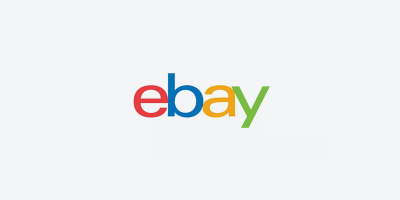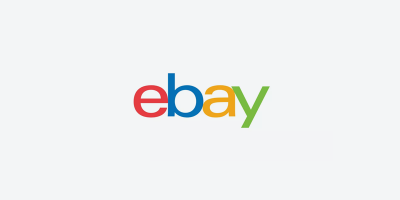
More than half of all Americans prefer to shop online. Considering that millennials and the upcoming consumers of generation Z are even more inclined to favor shopping online, we can only expect that number to keep growing for years to come.
This means that e-commerce is huge and it’s only going to get bigger. There’s a lot of e-commerce businesses out there trying to find their footing in an ever-growing, ever-changing landscape.
It doesn’t matter if you’re new to the game or well established. We all need to understand what a solid e-commerce foundation looks like and how to adapt it to the changing market.
There’s also a ton of information out there, coming from every direction, on how to run a successful e-commerce business. It’s easy to get overwhelmed and find yourself off track.
With that in mind, here’s an e-commerce manifesto. An outline of some of the core basics of successful e-commerce to help you focus on what’s really important for your business.
Identify Your Audience from the Start
Traffic to your e-commerce site is great. But, unless you are basing the success of your business on page views, generating traffic isn’t enough. What you really need are customers that spend money. You know them as conversions.
This is where really knowing your audience comes into play. You can market yourself across multiple platforms and reach an incredible amount of people. The thing is, if they aren’t your target market, then you’ve gotten nowhere.
Identifying your target market involves learning these 5 things about them.
- Who they are. This is basic, but if you know who they are, then you can figure out how to reach them. This isn’t the place for guessing.
- What matters to them. Priorities are going to change among generations and genders. Take them into consideration.
- What doesn’t matter to them. You can save yourself time and money by eliminating what your market doesn’t care about.
- How they describe what you’re selling. You need this information for SEO and PPC. If you are using keywords that don’t reflect how your target is searching for you, then you’ll miss them completely. It’s worth the research, I promise.
- What value are you offering? In what ways are you making their lives better or easier?
If you’re just starting out and haven’t quite targeted your audience yet, you can start by getting to know the customers who are buying from you and visiting your page. Consider a survey with a discount incentive and invite feedback with every interaction.
Develop a Seamless Multi-Channel Strategy
It’s estimated that there are 2-3 million e-commerce businesses in the world. You obviously aren’t competing with all of them, but the numbers illustrate just how mammoth the world of e-commerce really is.
Gone are the days of having a stellar webpage and calling it good. To get noticed, you need to be present across the multiple channels that your audience will find you on. For most e-commerce businesses, this means websites, blogs, social media, email, price comparison engines, apps, and marketplace platforms.
Do you need to be active in all of these? No, not if you aren’t reaching your market through them, but to be successful, you’re going to need to spread yourself around, at least a little.
It’s important to remember when doing multi-channel marketing is that the experience needs to be seamless for the consumer. Imagine the confusion if you visited a brand’s social media page but experienced something completely different when you downloaded their app. It would leave you confused and less trustworthy of their brand.
What you do in one spot needs to translate to the next. You need to have an image that’s consistent.

Monitor and Adapt
Not many e-commerce business jump in and get it completely right from the second their feet hit the ground. There are going to be learning curves and growth opportunities along the way. This is a good thing.
It’s crucial that you’re monitoring every aspect of your e-commerce business, constantly assessing it and adapting as needed.
Even if you’re wildly successful from the start, you’ll still want to grow. You can’t do this without consistently monitoring your business.
By monitoring, I mean keeping an eye on absolutely everything.
- How is your site functioning?
- Is the consumer’s experience seamless from first landing on your page through completion of a sale?
- Is the checkout process as fast and easy as it would be in a physical store?
- How are your stock levels?
- How effective is your delivery system?
- What is your follow up plan and is it retaining customers?
- How’s that SEO working out?
- What about keywords? Are they working?
- Are you reaching the right market? Is your market changing?
- What is your reputation? What are your opportunities for improvement?
Personalize Through Email
Personalization is important to your customer and that means it needs to be a priority for your business. Just look at a few statistics about the importance of marketing personalization.
- 81% of consumers want brands to get to know them better.
- 75% of consumers are more likely to purchase from a business that recognizes them by name.
- 79% of businesses that met their revenue goals have a solid personalization strategy in place.
These numbers tell us that personalization is key to retaining loyal customers and further building revenue through attracting new ones. Your market is looking at you to guide them in their purchasing decisions, and you can only do that by getting to know them and appealing to them on a personal level.
Personalization for your e-commerce business can mean anything from audience focused content to personalizing emails. Think about sending emails and discount offers for special occasions such as birthdays or the anniversary of their first purchase from you. Another suggestion is to offer a cart completion incentive that includes additional suggestions based on their shopping habits.
A little effort towards personalization will go a long way for your e-commerce business.
Use Storytelling to Sell Your Brand
We just talked about how your customers want you to get to know them. The flip side of this coin is that they want to get to know you better as well. You can accomplish this through storytelling.
Storytelling? Are we in preschool here?
No. You’re in the big leagues and storytelling has the power to take an unknown, lifeless brand and transform it into something magical.
Storytelling is the art of explaining how you came to be and what your mission or purpose is. What storytelling isn’t is bland copy that gives a quick rundown of your history. Storytelling needs to be compelling. It needs to make your audience feel connected to you through emotion.
You don’t need to write a novel. In fact, some of the best stories aren’t written at all.
Video is a preferred type of content and offers the perfect platform to tell a little bit about your brand. Visual social media platforms, like Snapchat, are also great for giving your target audience the opportunity to really see you.

Automate Where It Counts
A big mistake that too many e-commerce businesses make is thinking that not only can they do it all, but that they should. I’m here to tell you that automation is your friend.
Automation can streamline your workload by reducing the time that you or your employees spend in repetitive, menial tasks. This means more time for you to focus on the more important tasks like customer service and growing your business.
Areas that you can automate include billing, shipping, email, inventory management and more. If you haven’t already, now is the time to research platforms that can assist you in automating your e-commerce business.
There are many options out there, Shopify, MailChimp, and ZenDesk are examples of tools to help you automate different aspects of your business.
Connect with the Mobile Consumer
A few years ago this might not have made it into the e-commerce manifesto, but today, it’s non-negotiable. Without optimizing your site for the mobile consumer you’re setting yourself up for a business disaster.
The bottom line is that 80% of Internet users own a smartphone and searches from mobile devices are outnumbering those done from desktops. This means that more of your business is coming from a mobile user.
Plus, not being optimized for the mobile consumer will kill your SEO.
Make sure that your site is clean and easy to access, navigate, and purchase from using mobile devices.
Your e-commerce business will grow when you focus on building a strong foundation. Sometimes taking a step back and making sure you’ve got the basics covered is the best thing that you can do for a growing business. It’s the beginning of the road to success.

Jon Clark is the Managing Partner and chief SEO at Moving Traffic Media, a performance-based digital marketing agency in New York. He writes regularly providing thought leadership on topics related to SEO, PPC and Social Media. You can follow him on Twitter @jonleeclark or connect on Linkedin. In his downtime, he enjoys hanging out at coffee shops and documenting his travels on Instagram.



